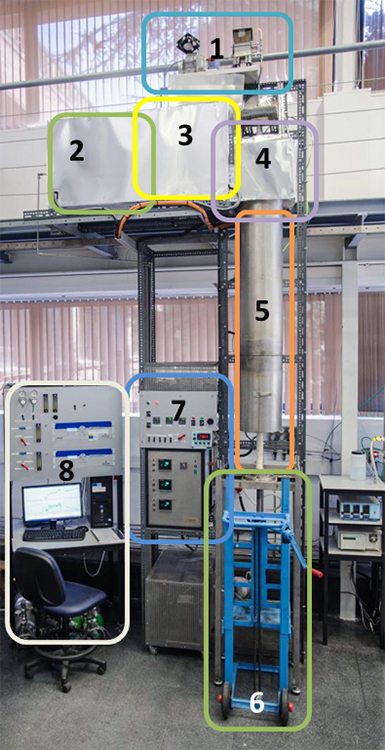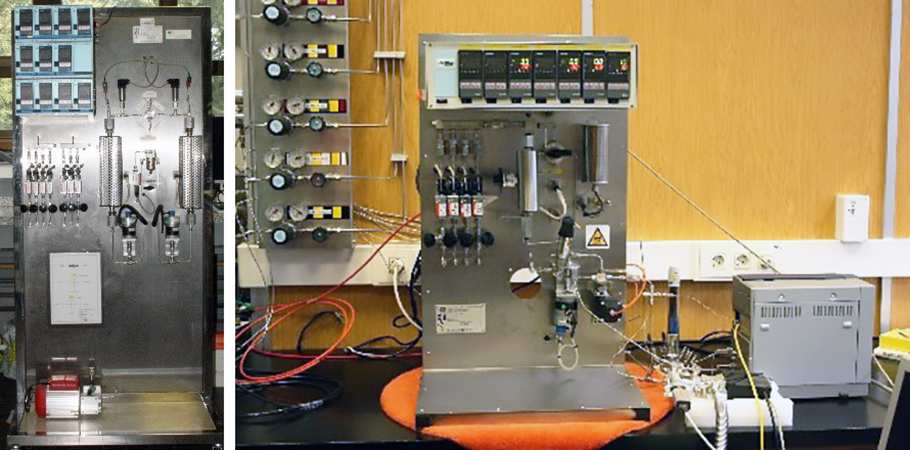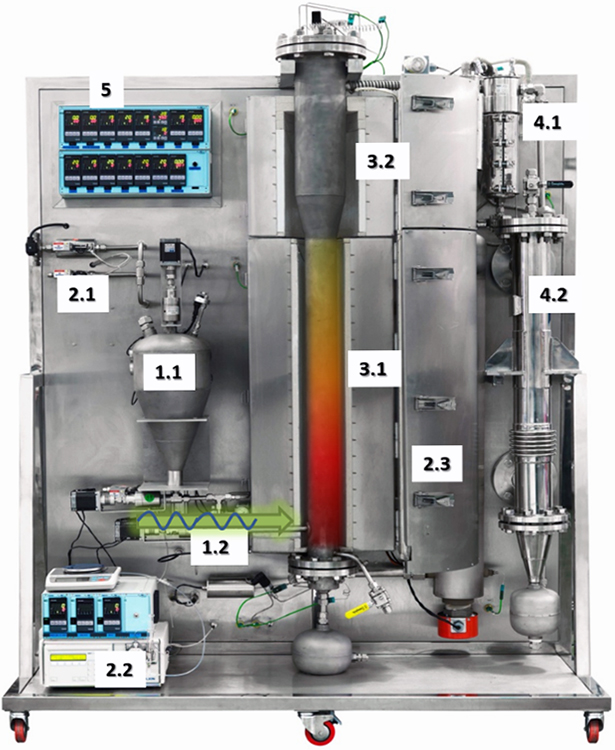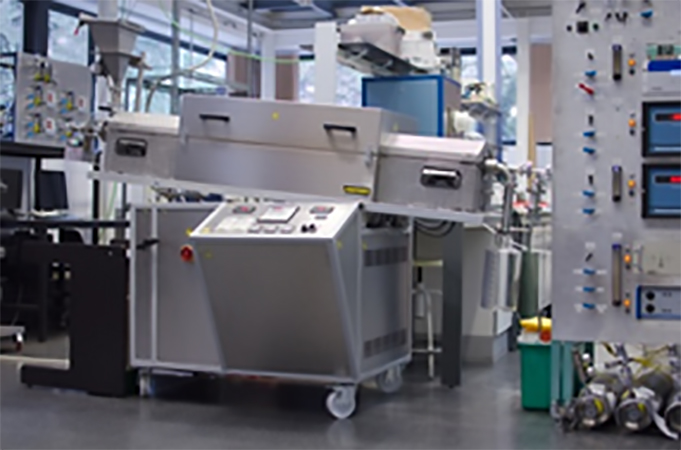Research Groups
ENERGY PROCESSES AND EMISSION REDUCTION - PrEM
SCIENTIFIC INFRASTRUCTURES
Group's facilities span from laboratory scale (thermobalances, fixed bed reactors, discontinuous fluidized bed reactor) to practically pilot scale (entrained flow reactors and fluidized bed reactor), all of them connected to online gas analysers:
- Experimental combustion set-up at semi-pilot scale
- Set of reactivity and gaseous emissions analysis
- Experimental gasification set-up at laboratory scale
- Fixed bed set up for the continuous evaluation of adsorption-desorption cycles (TSA, PSA, PTSA)
The Department also has a texture characterization laboratory (ASAP 2010, Tristar 3000, Accupyc 1330) and a special-testing laboratory.
SINGULAR SCIENTIFIC INFRASTRUCTURE
 |
Drop tube furnaces: Two reactors capable of reaching temperatures of up to 1000 and 1500 °C, respectively. Main applications include combustion and oxy-combustion adding water vapor, using either coal and coal-biomass mixtures as fuels. They have an internal diameter of 4 cm and a reaction zone of 1 m. The residence times range from 0.3 to 3 seconds, and it is possible to work with particle sizes greater than 53 µm.
Picture captions: 1. Feeder. 2. Preheater. 3. Unión Flexible Union. 4. Sample injection. 5. Reaction zone. 6. Collection probe. 7. Control panel. 8. Analysers. |
 These two adsorption systems were purposely designed by the group in collaboration with PID Eng & Tech. They allow testing solid sorbents in multiple adsorption- desorption cycles, simulating off-gases from combustion processes (N2 / CO2), pre-combustion (H2 / CO2), or biogas (CH4 / CO2). It can run tests at temperatures up to 300 ° C and pressures from vacuum to 40 bar. The single bed device consists of a fixed bed column constructed in SS316 stainless steel, with an internal diameter of 1.3 cm and a height of 13 cm. The system also allows feeding water vapour, incorporating a Bronkhorst High Tech EL-FLOW controller and a Rotronic Hygroclip 2 temperature and humidity sensor. Gas analysis is performed in a micro-GC (CP 4900 from Varian-Agilent Technologies). The device consisting of two inter-connected columns, with an internal diameter of 1.3 cm and height of 40 cm, performs the gas analysis with a mass spectrometer.
These two adsorption systems were purposely designed by the group in collaboration with PID Eng & Tech. They allow testing solid sorbents in multiple adsorption- desorption cycles, simulating off-gases from combustion processes (N2 / CO2), pre-combustion (H2 / CO2), or biogas (CH4 / CO2). It can run tests at temperatures up to 300 ° C and pressures from vacuum to 40 bar. The single bed device consists of a fixed bed column constructed in SS316 stainless steel, with an internal diameter of 1.3 cm and a height of 13 cm. The system also allows feeding water vapour, incorporating a Bronkhorst High Tech EL-FLOW controller and a Rotronic Hygroclip 2 temperature and humidity sensor. Gas analysis is performed in a micro-GC (CP 4900 from Varian-Agilent Technologies). The device consisting of two inter-connected columns, with an internal diameter of 1.3 cm and height of 40 cm, performs the gas analysis with a mass spectrometer.
 |
Highly versatile gasification pilot plant prepared to use steam and air alongside other gases (N2, CO2) and different fuel feedstock to produce syngas (& H2) from biomass wastes. The feeding system consists of two storage hoppers and dual worm gear with refrigeration. The cylindrical gasification reactor is made of SS310, 1 m in length and 7.7 cm inner diameter that ends in a 0.529 m long and 13.3 cm diameter freeboard. It can reach a maximum temperature of 920 °C. Depending on the fuel’s characteristics, the plant can treat up to nearly 10 kg/h delivering a maximum power of 55 kWth.
Picture captions: 1.1. Hopper. 1.2. Worm gears. 2.1. Mass flow controllers. 2.2. HPLC water pump. 3.1. Gasifier. 3.2. Freeboard. 4.1. Cyclones. 4.2. Heat exchanger. 5. Control system. |
 |
Rotary oven: Very flexible and multi-purpose rotary furnace. It has been used for the treatment of biomass (torrefaction), production of activated carbons and the co-combustion of coal and refuse-derived fuel (RDF), with on-line analysis of the gases and contaminants, i.e., Hg. The rotary tube furnace can be inclined. The time of the heat treatment depends on the angle of inclination, the speed of rotation and the length of the working tube, as well as from the flow properties of the feed. Allows working in inert and reactive atmospheres. The reactor is an alumina tube with an internal diameter of 9.5 cm and 1.79 m length. |








